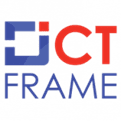Yamuna Shrestha BYD Nepal
22nd August 2025, Kathmandu
The automotive market in Nepal is undergoing a dramatic transformation, with electric vehicles (EVs) at the forefront of this change.
Yamuna Shrestha BYD Nepal
To gain a deeper understanding of these developments, ICTFrame sat down for an exclusive interview with Yamuna Shrestha, the Managing Director of Cymex Inc., the official distributor of BYD vehicles in Nepal, and a respected central member of the NADA Auto Association.
Her insights provide a comprehensive look at the industry’s present state and its future trajectory, a topic of great interest to our tech-savvy audience.
Shrestha began by addressing a common point of confusion for consumers: the two major auto shows being held in quick succession. She clarified that from a customer’s perspective, the experience at both events is largely the same, noting, “Both are held at the same Bhrikutimandap exhibition hall with similar structures.
” She emphasized that instead of viewing them as competitors, they should be seen as a single “15-day auto festival” for customers. This unique arrangement is a direct result of the rapid growth of Nepal’s auto market.
As Shrestha explained, with over three dozen importers and numerous brands now operating in the country, the limited space at Bhrikutimandap can no longer accommodate everyone at once. This forces brands to split between the two shows, a clear indicator of a thriving industry and a growing consumer base for both traditional and electric vehicles.
The conversation then shifted to BYD’s strategic presence at these events. BYD, a global leader in EVs, has been making significant waves in Nepal. At the NIMa Mobility Expo 2025, the brand unveiled the all-new BYD Atto 1 (also known as the BYD Seagull in international markets).
Shrestha revealed that they are showcasing different models at each event, including a new launch planned exclusively for the NADA Auto Show. This aggressive strategy underscores BYD’s commitment to strengthening its foothold in the Nepali market and introducing a diverse range of models to meet varying consumer needs.
A critical part of the interview focused on the policy landscape. Shrestha articulated the auto sector’s main demand from the government: policy stability. The frequent changes in EV-related tax and import policies have created a climate of uncertainty, which is a major concern for investors and consumers alike.
While acknowledging that the recent budget has brought some welcome stability, she expressed a wish for further tax reductions for hybrid vehicles to support a smoother transition toward electrification.
Shrestha pointed out the government’s ambitious goal of achieving a 30% EV market share by 2030, a target that seems achievable given the current 7.78% market share and the industry’s proactive growth.
However, a major hurdle remains in the form of monetary policy, particularly the Nepal Rastra Bank’s (NRB) strict 60-40 loan scheme. Shrestha provided a clear example with the popular BYD Dolphin, which costs around NPR 4.1 million.
Under the previous 80-20 rule, a customer only needed to pay NPR 800,000 as a down payment. With the current policy, that figure has doubled to NPR 1.6 million, placing a significant financial burden on middle- and lower-income individuals.
“This makes it harder for middle- and lower-income groups to afford cars,” she said, lamenting that the policy has “pushed the dream of owning a car further away for many young people and middle-class families.” This is a crucial point for ICTFrame’s audience, as it directly impacts accessibility and the adoption of modern technology.
On the topic of market trends, Shrestha confirmed what many have observed: the Nepali auto market has become “heavily toward EVs in the last 4-5 years.” She stated that almost 80% of new vehicles on the road today are EVs, a stark contrast to the past.
While acknowledging that traditional internal combustion engine (ICE) vehicles will not disappear entirely, she stressed that the future of the market depends on technology and consumer demand. The key, she believes, is to offer durable, safe, and well-designed vehicles that are suitable for Nepal’s unique road conditions.
Finally, Shrestha shared an update on BYD’s customer-centric strategy. The company is not just focused on selling cars but on building a robust ecosystem.
This includes establishing 18 dealer stores nationwide, with new one-stop service centers and workshops for larger vehicles already operational in Kathmandu and Chitwan. The company is also preparing to introduce battery maintenance services, which is a significant step toward addressing consumer concerns about EV longevity.
In summary, Yamuna Shrestha’s insights paint a picture of a dynamic and rapidly maturing auto market in Nepal. While facing challenges such as policy instability and restrictive loan schemes, the industry is clearly on a path toward electrification.
With strong brands like BYD leading the charge and a growing consumer interest, the future of sustainable and tech-driven mobility in the country looks more promising than ever.
For more: Yamuna Shrestha BYD Nepal
